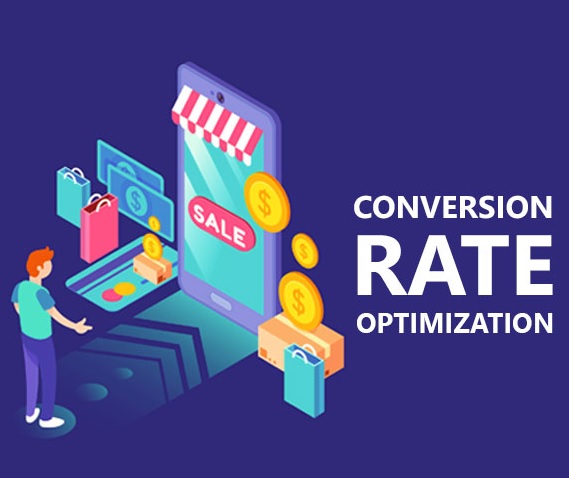
Attracting visitors to your website is one thing, but converting them into paying customers is another. For those running an e-commerce business, it’s crucial to master this distinction and focus on improving your conversion rate to generate profit.
Operating an e-commerce store differs from other business ventures, as traditional sales tools like networking and B2B tactics don’t apply when trying to reach individual consumers.
So how can you enhance your business and conversion rate while maintaining a loyal customer base? Here are some tips to optimise your time and efforts in online business:
#1. Target a specific audience
Many e-commerce business owners try to cater to everyone, making it more difficult to bring qualified leads to their website. By narrowing down your target audience, you’ll spend time and money on generating leads from people more likely to make a purchase.
#2. Analyse your sales funnel
Understanding your sales funnel is essential for conversion rate optimisation. Ultimately, you need a scalable and repeatable sales cycle that helps grow your customer base.
Sales cycles can vary; some customers may make quick decisions, while others take more time researching and deliberating before purchasing. Your goal is to expedite the sales cycle, guiding customers from awareness to purchase as efficiently as possible.
#3. Master web design basics
While B2B-style landing pages aren’t necessary for e-commerce stores, other landing page best practices can help optimise conversion rates. Many eCommerce and WordPress web development companies can identify and address these issues effectively.
As Clearleft founder Andy Budd states, “A good landing page needs to effectively answer the core sales objections the user will have… Lastly, you need to offer a clear, simple and pain-free way of moving to the next step in the process.”
Applying this to your product pages means providing high-quality images, clear pricing and features, and an easily accessible “Add to Cart” button. Enhancing your product pages will significantly contribute to increased conversions.
#4. Improve your product descriptions
The way you describe your products matters. Overly hyped sales copy won’t necessarily boost your conversions, but informative sales copy will. Don’t shy away from longer descriptions; if your customers are genuinely engaged, they’ll read it all. Just ensure the text is well-formatted, easy to understand, and digestible.
Additionally, provide a concise summary for website visitors and potential buyers.
In summary, highlight the essence of your product, its purpose, and why it’s beneficial for consumers. Emphasise the advantages and communicate its value
#5. Invest in site security
A 2017 survey revealed that 32% of website users had at least one of their accounts hacked. High-profile hacking incidents involving companies like Equifax and Yahoo have increased consumers’ concerns about how their information is shared online, particularly credit card and payment processing data.
Neglecting data security can undermine your conversion optimisation efforts. Implementing measures like enabling HTTPS through SSL certificates, using trusted payment processing systems like PayPal, and displaying security badges on your website can significantly reduce the chances of people leaving your site and improve customer trust in data security.
#6. Offer free shipping, if possible.
Around 50% of e-commerce sellers already provide free shipping. Some offer it on all purchases, while others have conditions for customers to qualify for free shipping. Retailers like JCPenney and Amazon typically provide free shipping when the total cost of the shopping cart exceeds a specific amount.
Several studies have shown that unconditional free shipping is a crucial deciding factor for consumers and that customers will purchase more products if free shipping is available.
Conversely, high shipping costs have been ranked as the top reason customers abandon their online shopping carts.
If offering free shipping isn’t an option for you, consider charging a flat rate or being upfront about the costs. Your conversion rates will likely suffer if customers only see shipping charges and no free shipping option at the checkout page. Ensure your shipping costs, whether flat or variable, are displayed on your site and that consumers can view them before reaching the payment page.
#7. Make small modifications.
While you may be eager to improve your conversion rates, you could be tempted to overhaul your website entirely. Although a complete revamp might be beneficial for an outdated website, it’s generally not recommended in most cases.
Dramatic changes could alienate existing customers while still failing to address your conversion rate issues. By making smaller, incremental adjustments, you can better determine what is helping or hindering your conversion efforts.
As Hoa Loranger of Nielsen Norman Group advises, avoid making drastic changes when minimal ones will suffice: “Too many websites undergo a major overhaul unnecessarily. While legitimate reasons exist for engaging in a redesign, the reality is that many problems you need to solve are isolated and can be fixed with smaller, incremental approaches. Look at the metrics rather than guess what needs to be changed. Allow data to help you determine the extent of the problem and apply the least amount of change necessary to solve it.”
#8. Display product reviews on your site.
A study by GE Capital Retail Bank found that 61% of online shoppers read product and service reviews before making a purchase. So it’s essential to display reviews and comments on your e-store.
Regardless of the e-commerce platform you’re using, you can always include product reviews and customer feedback. Your website may have built-in review functionality, or you could use a free widget that enables product reviews. You can also collect reviews from customers and feature them on your website as testimonials.
Bear in mind that you should never remove negative reviews. They can actually improve your conversion rates if they’re few compared to the positive ones.
Consider using star ratings, with more stars indicating better performance.
#9. Make the correct measurements.
The best way to determine which changes are positively or negatively affecting your website’s conversion rates is by measuring the results. Without analytics, you won’t have a complete understanding of your store’s strengths and weaknesses.
Monitoring the growth of your conversion rates should not be your only measure of success or failure. It’s also crucial to ensure that your value per customer is increasing. Focus on making the most of your existing traffic before trying to attract more.
As you experiment with the above tactics and consider factors to fully optimise your conversion strategy, you’ll be in a better position to turn potential customers visiting your site into actual buyers. Remember, you can always improve and grow your conversion rates. Don’t settle for your current rates; always aim for higher goals.
Developing and maintaining a strong conversion rate requires ongoing research and refinement, but these techniques and guidelines will undoubtedly help you stay on the right path. As you continue to enhance your conversion efforts, alongside offering excellent products and top-notch customer service, you’ll create a solid foundation for long-lasting success.



